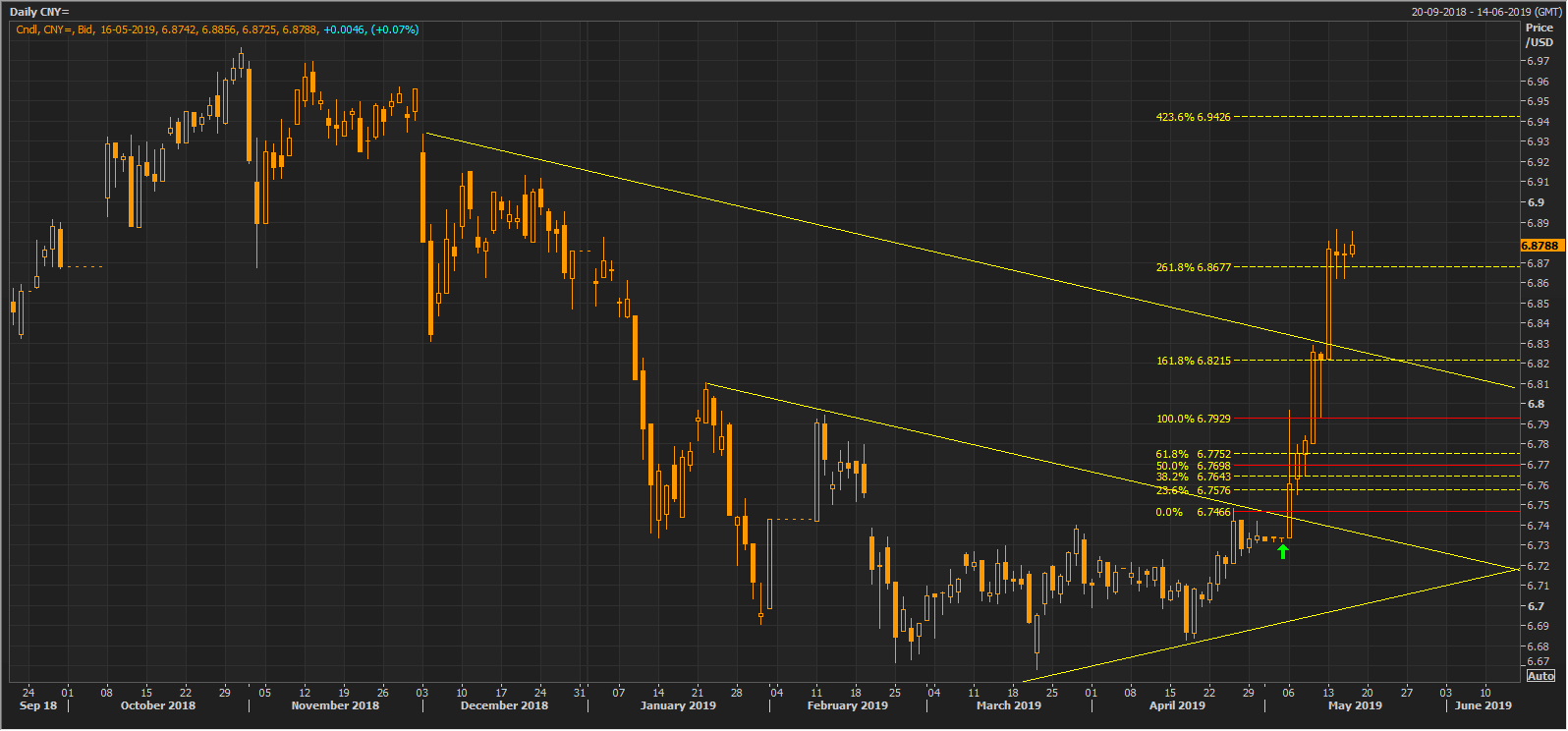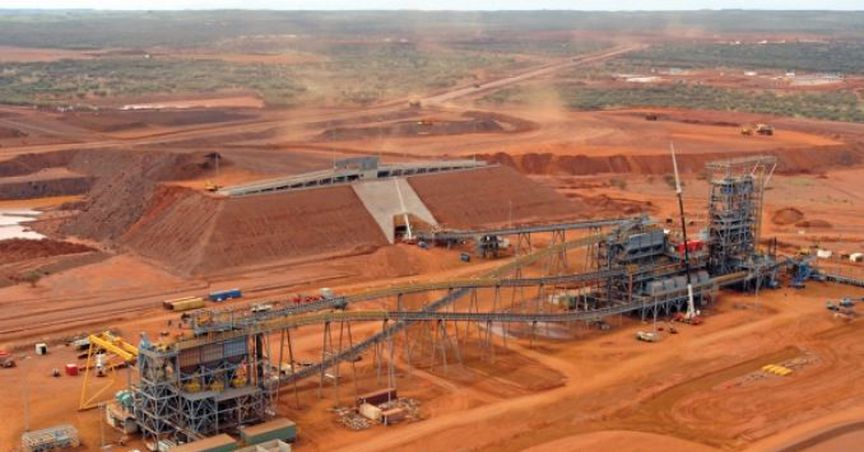Iron ore prices made a 52-week high amid supply shortage and Yuan devaluation. The Chicago Mercantile Exchange 62% graded Fe reached the level of US$95.99 (as on 15th May 2019), up by 1.22% as compared to its previous close of US$94.82.
The prices rose globally, and in China, the prices of 62% graded Fe settled at RMB 660.00 (as on 15th May 2019), up by RMB 15.50 or 2.40% as compared to its previous close.
Physical iron ore trades inched up the prices in China amid devaluation in the domestic currency against the dollar prices. The dollar prices gained tremendous leverage against the Chinese yuan amid re-escalation of previously dormant U.S-China trade war.
The global pair of U.S. dollar and Chinese Yuan (USD/CNY) rose significantly and steeply from the level of RMB 6.7325 (as on 3rd May 2019) to the present level of RMB 6.8833 (as on 16th May 2019 UTC-4 04:24:58). The steep rise in dollar prices to around a 19-week high devaluated the Chinese yuan against the dollar.
 Source: Thomson Reuters; USD/CNY Daily Chart
Source: Thomson Reuters; USD/CNY Daily Chart
A highly leverage dollar and highly devaluated yuan prompted traders to raise the quotes in the physical market, which in turn, set the iron ore prices ablaze in the global market.
Apart from a highly devalued yuan, lack of supply from Australia and Brazil provided the impetus to the iron ore prices and the prices rose to a fresh 52-week high of US$95.99.
The steel inventory in China took a jab and again supported the steel prices in the domestic market. The prices of most active October 1910 Shanghai Future Exchange (SHFE) Rebar surged by 1.12% to settle at RMB 3704 a tonne.
As per the market estimation, the steel inventory is further expected to decline amid production cut in major steelmaking provinces in China such as Tangshan. As per the data, the local government in Tangshan ordered the steel mills in the provinces to drop their steelmaking capacity by 10.07 million metric tonnes and iron making capacity by 8.04 million metric tonnes.
Tangshan provinces further intend to decline the steel production annually to 100 million metric tonnes a year by 2020 and further aim to keep the count of steelmakers under 30 by the same year, which is currently at 40 in the provinces.
The Chinese stance to curb the environmental pollution restricted gains in the lower grade, such as 58% Fe and raised the premium of high-grade such as 65% Fe.
| Index | Fe Content | Spread to 62% grade | % Change in Spread |
| IOPI58 | 58% Fe Fines | -76 | -10.98% |
| IOPI65 | 65% Fe Fines | 65 | 9.39% |
As we mentioned in our previous article that a fall in steel prices prevented the gains in iron ore price, and the market participants were expecting a rise amid supply drop. The current decision by the Chinese government to restrict the steel output and reduce the count of steelmakers again supported the steel prices in the domestic market.
The high steel prices coupled with falling inventory and iron ore shortage coupled with devalued yuan prompted the traders to increase the quotes on iron ore, which in turn, gave iron ore a bull ride in the international market.
Disclaimer
This website is a service of Kalkine Media Pty. Ltd. A.C.N. 629 651 672. The website has been prepared for informational purposes only and is not intended to be used as a complete source of information on any particular company. Kalkine Media does not in any way endorse or recommend individuals, products or services that may be discussed on this site. Our publications are NOT a solicitation or recommendation to buy, sell or hold. We are neither licensed nor qualified to provide investment advice.



